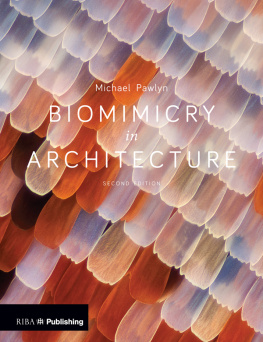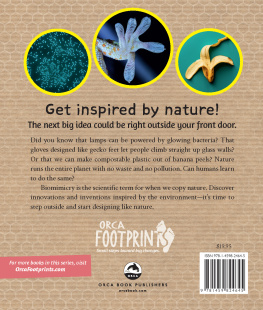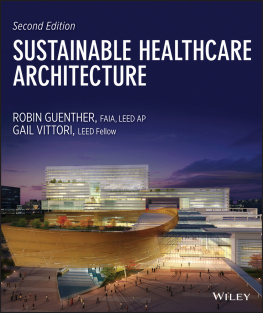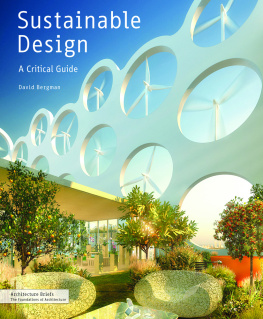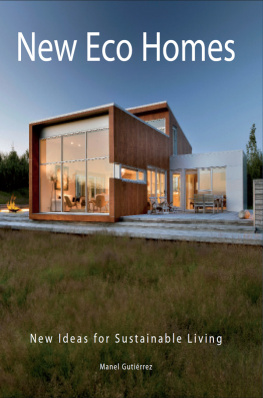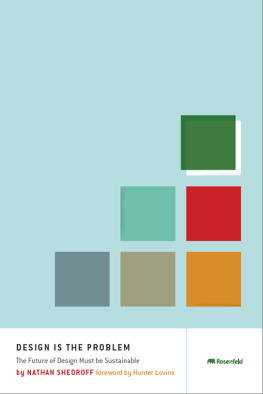The seeds of my interest in biomimicry were sown in my teenage years, but emerged fully when I participated in a one-week course at Schumacher College led by Amory Lovins and Janine Benyus in 2003. I am grateful to both the course leaders for the generosity with which they shared their knowledge during what was a truly inspiring week that changed the path of my career permanently. Two other pioneers of biomimicry, Dayna Baumeister and Julian Vincent, became mentors for me while writing this book. Julian provided highly valued input throughout, including numerous readings of drafts, a wealth of important references and corrections to my biological blunders. Dayna emboldened me at key stages with inspirational comments. The photographer Kelly Hill has been a constant source of support both as my wife and in bringing her skilled eye to the sourcing of images. My editorial consultant, Alison McDougall-Weil, helped immeasurably in reworking the structure and focus of the second edition and offered a wealth of constructive suggestions that improved the text.
I am grateful to all those who have written illuminating books about biomimetics (including all their names here would start to feel like a rerun of the bibliography!) and to others, like Andy Middleton and Graham Dodd, whom I have had the great pleasure of teaching with and learning from. Many individuals have been generous with their time and knowledge in discussing ideas for the book, sharing thoughts or reading drafts including: Patrick Bellew, Karen Blincoe, David Crooks, David de Rothschild, Herbert Girardet, Brian Goodwin, Petra Gruber, Frederic Hauge, Peter Head, Geoff Hollington, David Kirkland, Anna Liu, Dame Ellen MacArthur, Tom McKeag, William Myers, Leonora Oppenheim, Anna Maria Orru, Charlie Paton, Yaniv Peer, Jonathon Porritt, Neil Thomas, Mike Tonkin, Bill Watts and Graham Wiles. I never met David MacKay, but he did us all a great service in writing his thoroughly researched and wonderfully readable book of numbers. My chapter on energy owes a lot to his work.
I would like to thank Tim Smit and Grimshaw for the opportunities I had while working there and for the input of the Green R&D group, which was a wonderful forum for ideas. Somewhat late, I must thank my biology teacher at King James College, Alan Jones, who did so much to convey his enthusiasm for the subject and unwittingly helped me on my career path. Similarly, I am grateful to my parents for their art and engineering nurture and to my uncle, whose gift of the Club of Romes book Blueprint for Survival in my early teenage years provided another influential strand to my future development.
I would also like to thank the countless scientists who continue to reveal biological secrets and those who work in environmentally related fields, such as climate science, with the highest integrity and do so in spite of the media assault on their findings. It often seems that, 200 years after the age of the Enlightenment, we are entering the Endarkenment, in which unqualified sceptics are considered as reliable as scientists on matters of climatology, and monomathic economists create political policies with no regard for natural capital or long-term value. We will need polymaths and inspired collaboration more than ever during the decades ahead.
MICHAEL PAWLYN
Abbott, Derek, Keeping the energy debate clean: How do we supply the worlds energy needs?, Proceedings of the IEEE , Vol. 98, No. 1, January 2010, pp. 4266
Adrover, Esther Rivas, Deployable Structures , London, Laurence King Publishing Ltd, 2015, ISBN: 978-1-78067-483-4
Ashby, Michael F., Materials and the Environment: Eco-Informed Material Choice , Oxford, Butterworth-Heinemann, 2009, ISBN: 978-1-85617-608-8
Azad, M. A. K., Ellerbrok, D., Barthlott, W. and Koch, K., Fog collecting biomimetic surfaces: Influence of microstructure and wettability, Bioinspiration and Biomimetics , Vol. 10, No. 1, January 2015, doi: 10.1088/1748-3190/10/1/016004
Bar-Cohen, Yoseph, Biomimetics: Using nature to inspire human innovation, Bioinspiration and Biomimetics , Vol. 1, No. 1, 2006, pp. 112, doi: 10.1088/1748-3182/1/1/P01
Bar-Cohen, Yoseph, Focus issue on biomimetics using electroactive polymers as artificial muscles, Bioinspiration and Biomimetics , Vol. 2, No. 2, 2007, pp. 13, doi: 10.1088/1748-3182/2/2/E01
Beukers, A. and Hinte, E. v., Lightness: The Inevitable Renaissance of Minimum Energy Structures , Rotterdam, 010 Publishers, 1999, ISBN: 90-6450-334-6
Beuvelot, J., Bergeret, C., Mallet, R., Fernandez, V., Cousseau, J., Basl, M. F. and Chappard, D., In vitro calcification of chemically functionalized carbon nanotubes, Acta Biomaterialia , Vol. 6, No. 10, 2010, pp. 41104117, doi: 10.1016/j.actbio.2010.05.011
Buehler, Markus, J., Tu(r)ning weakness to strength, Nano Today , Vol. 5, No. 5, 2010, pp. 379383
Burgess, I., Aizenberg, J. and Loncar, M., Creating Bio-inspired Hierarchical 3D-2D Photonic Stacks Via Planar Lithography on Self-Assembled Inverse Opals , 2012, Ithaca, NY, Cornell University Library, doi: 10.1088/1748-3182/8/4/045004.arXiv: 1211.6811
Comanns, P., Effertz, C., Hischen, F., Staudt, K., Bhme, W. and Baumgartner, W., Moisture harvesting and water transport through specialized micro-structures on the integument of lizards, Belstein Journal of Nanotechnology , Vol. 2, 2011, pp. 204214
Corni, I., Harvey, T. J., Wharton, J. A., Stokes, K. R., Walsh, F. C. and Wood, R. J. K., A review of experimental techniques to produce a nacre-like structure, Bioinspiration and Biomimetics , Vol. 7, 23 pp., 2012, doi: 10.1088/1748-3182/7/3/031001
Craig, S., Harrison, D., Cripps, A. and Knott, D., BioTRIZ suggests radiative cooling of buildings can be done passively by changing the structure of roof insulation to let longwave infrared pass, Journal of Bionic Engineering , Vol. 5, No. 1, 2008, pp. 5566
De Focatis, D. S. A. and Guest, S. D., Deployable membranes designed from folding tree leaves, Philosophical Transactions of The Royal Society London A , Vol. 360, 2002, pp. 227238 (retrieved from rsta.royalsocietypublishing.org on 21.01.11)
Dindyal, Shiva, The sperm count has been decreasing steadily for many years in Western industrialised countries: Is there an endocrine basis for this decrease?, The Internet Journal of Urology , Vol. 2, No. 1, 2004, ISSN: 1528-8390 (retrieved on 24.01.11)
Gallagher, C. L. (ed.), Bioinspiration: An Economic Progress Report , Fermanian Business and Economic Institute at Point Loma Nazarene University, commissioned by San Diego Zoo, 2013
Gallagher, C. L. (ed.), Can 3D Printing Unlock Bioinspirations Full Potential? , Fermanian Business and Economic Institute at Point Loma Nazarene University, August 2014
Gruber, Petra, The signs of life in architecture, Bioinspiration and Biomimetics , Vol. 3, No. 2, 2008, doi: 10.1088/1748-3182/3/2/023001
Gruber, Petra and Jeronimidis, George, Has biomimetics arrived in architecture?, Bioinspiration and Biomimetics , Vol. 7, No. 1, 2012, doi: 10.1088/1748-3182/7/1/010201
Hassan, Tarek and Ye, Jilin (eds), Proceedings of the 1st International Conference on Industrialised, Integrated, Intelligent Construction (I3CON) Loughborough University, 1416 May 2008
Hawken, P., Lovins, A. and Lovins, L. H., Natural Capitalism , New York, BackBay Books/Little, Brown and Company, 1999, ISBN: 978-0-316-35300-7
Hensel, M., Menges, A. and Weinstock, M., Emergent Technologies and Design: Towards a Biological Paradigm for Architecture , London and New York, Routledge, 2010, ISBN: 10 0-415-49344-7
Jones, David Lloyd, Architecture and the Environment: Bioclimatic Building Design , London, Lawrence King Publishing Ltd, 1998, ISBN: 1-85669-103-9
Kaplinsky, Joe, Biomimicry versus Humanism, Manmade Modular Megastructures , Architectural Design Special Issue, Vol. 76, No. 1, January/February, 2006, pp. 6671, doi: 10.1002/ad.212

